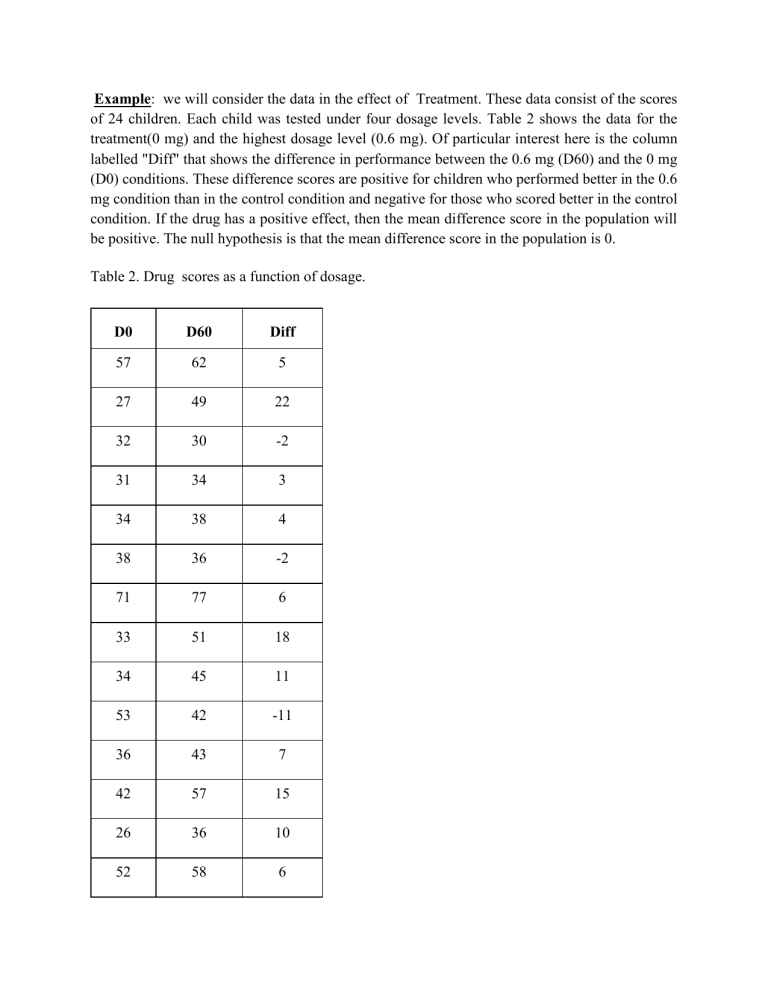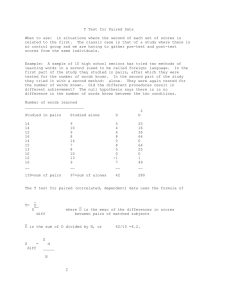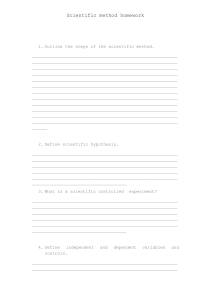
Example: we will consider the data in the effect of Treatment. These data consist of the scores of 24 children. Each child was tested under four dosage levels. Table 2 shows the data for the treatment(0 mg) and the highest dosage level (0.6 mg). Of particular interest here is the column labelled "Diff" that shows the difference in performance between the 0.6 mg (D60) and the 0 mg (D0) conditions. These difference scores are positive for children who performed better in the 0.6 mg condition than in the control condition and negative for those who scored better in the control condition. If the drug has a positive effect, then the mean difference score in the population will be positive. The null hypothesis is that the mean difference score in the population is 0. Table 2. Drug scores as a function of dosage. D0 D60 Diff 57 62 5 27 49 22 32 30 -2 31 34 3 34 38 4 38 36 -2 71 77 6 33 51 18 34 45 11 53 42 -11 36 43 7 42 57 15 26 36 10 52 58 6 36 35 -1 55 60 5 36 33 -3 42 49 7 36 33 -3 54 59 5 34 35 1 29 37 8 33 45 12 33 29 -4 To test this null hypothesis, we compute t.






